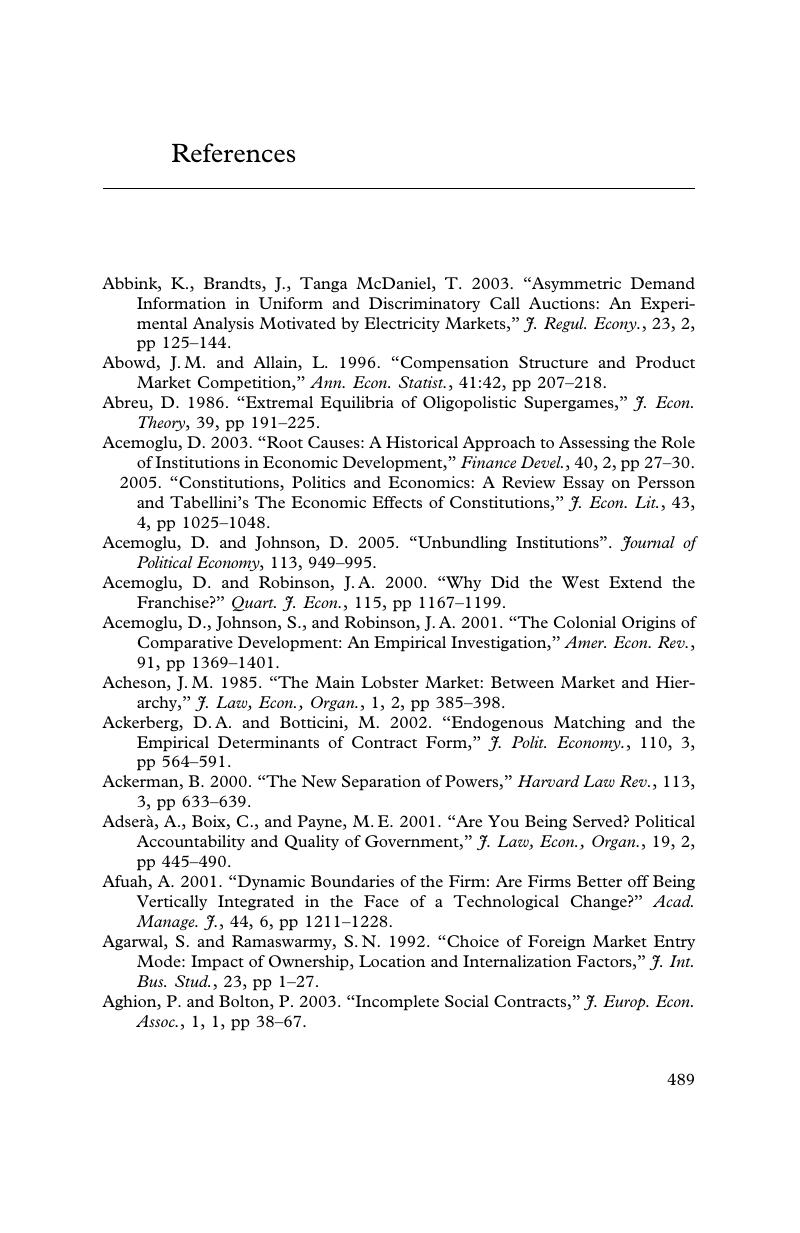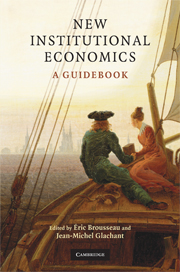Book contents
- Frontmatter
- Contents
- List of tables
- List of figures
- List of contributors
- Acknowledgements
- Foreword
- A Road Map for the Guidebook
- Introduction to New Institutional Economics: A Report Card
- Part I Foundations
- Part II Methodology
- Part III Strategy and Management
- Part IV Industrial Organization
- Part V Institutional Design
- Part VI Challenges to Institutional Analysis
- Notes
- References
- Index
- References
References
Published online by Cambridge University Press: 06 July 2010
- Frontmatter
- Contents
- List of tables
- List of figures
- List of contributors
- Acknowledgements
- Foreword
- A Road Map for the Guidebook
- Introduction to New Institutional Economics: A Report Card
- Part I Foundations
- Part II Methodology
- Part III Strategy and Management
- Part IV Industrial Organization
- Part V Institutional Design
- Part VI Challenges to Institutional Analysis
- Notes
- References
- Index
- References
Summary

- Type
- Chapter
- Information
- New Institutional EconomicsA Guidebook, pp. 489 - 542Publisher: Cambridge University PressPrint publication year: 2008



